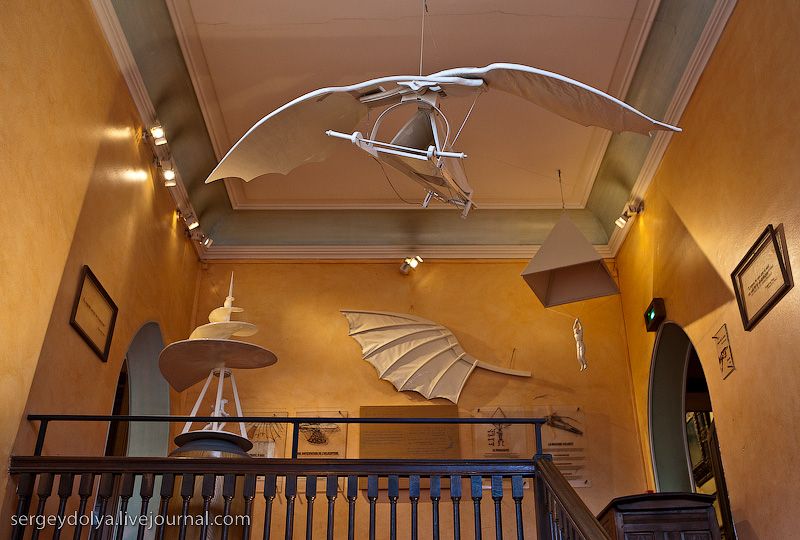|
|
Leonardo Da Vinci Castle
|
In the early 13th century, Crusaders' castles were mostly built by Military Orders, such as the Knights Hospitaller, Knights Templar, and Knights of the Teutonic Order. They were responsible for the foundation of sites such as Krak des Chevaliers, Margat, and Belvoir. The forms of the castles varied not just between orders, but individually from castle to castle, although it was common for those founded in this period to have concentric defences. The concept, which originated in castles such as Krak des Chevaliers, was to remove the reliance on a central strongpoint and to emphasise the defence of the curtain walls. There would be more than one ring of defensive walls, one inside the other, with the inner ring rising above the outer so that its field of fire was not completely obscured. If assailants made it past the first line of defences into the outer enclosure, they would be caught in the killing ground between the inner and outer walls and have to assault the second wall to secure the fall of the castle. Concentric castles were widely copied across Europe, for instance when Edward I of England – who had himself been on Crusade – built castles in Wales in the late 13th century, four of the eight he founded were concentric. Not all the features of the Crusader castles from the 13th century were emulated in Europe; for instance, it was common in Crusader castles to have the main gate in the side of a tower and for there to be two turns in the passageway, lengthening the time it took for someone to reach the outer enclosure. It is rare for this bent entrance to be found in Europe.
One of the effects of the Livonian Crusade in the Baltic was the introduction of stone and brick fortifications. Although there were hundreds of wooden castles in Prussia and Livonia, the use of bricks and mortar was unknown in the region before the Crusaders. Until the 13th century and start of the 14th centuries, their design was heterogeneous, however this period saw the emergence of a standard plan in the region: a square plan, with four wings around a central courtyard. It was common for castles in the East to have arrowslits in the curtain wall at multiple levels; contemporary builders in Europe were wary of this as they believed it weakened the wall. Arrowslits did not compromise the wall's strength, but it was not until Edward I's programme of castle building that they were widely adopted in Europe. The Crusades also led to the introduction of machicolations into Western architecture. Until the 13th century, the tops of towers had been surrounded by wooden galleries, allowing defenders to drop objects on assailants below. Although machicolations performed the same purpose as the wooden galleries, they were probably an Eastern invention rather than an evolution of the wooden form. Machicolations were used in the East long before the arrival of the Crusaders, and perhaps as early as the first half of the 8th century in Syria. The greatest period of castle building in Spain was in the 11th to 13th centuries, and they were most commonly found in the disputed borders between Christian and Muslim lands. Conflict and interaction between the two groups led to an exchange of architectural ideas, and Spanish Christians adopted the use of detached towers. The Spanish Reconquista, driving the Muslims out of the Iberian Peninsula, was complete in 1492.
Although France has been described as "the heartland of medieval architecture", the English were at the forefront of castle architecture in the 12th century. French historian François Gebelin wrote: "The great revival in military architecture was led, as one would naturally expect, by the powerful kings and princes of the time; by the sons of William the Conqueror and their descendants, the Plantagenets, when they became dukes of Normandy. These were the men who built all the most typical twelfth-century fortified castles remaining to-day". Despite this, by the beginning of the 15th century, the rate of castle construction in England and Wales went into decline. The new castles were generally of a lighter build than earlier structures and presented few innovations, although strong sites were still created such as that of Raglan in Wales. At the same time, French castle architecture came to the fore and led the way in the field of medieval fortifications. Across Europe – particularly the Baltic, Germany, and Scotland – castles were built well into the 16th century.
|
|









